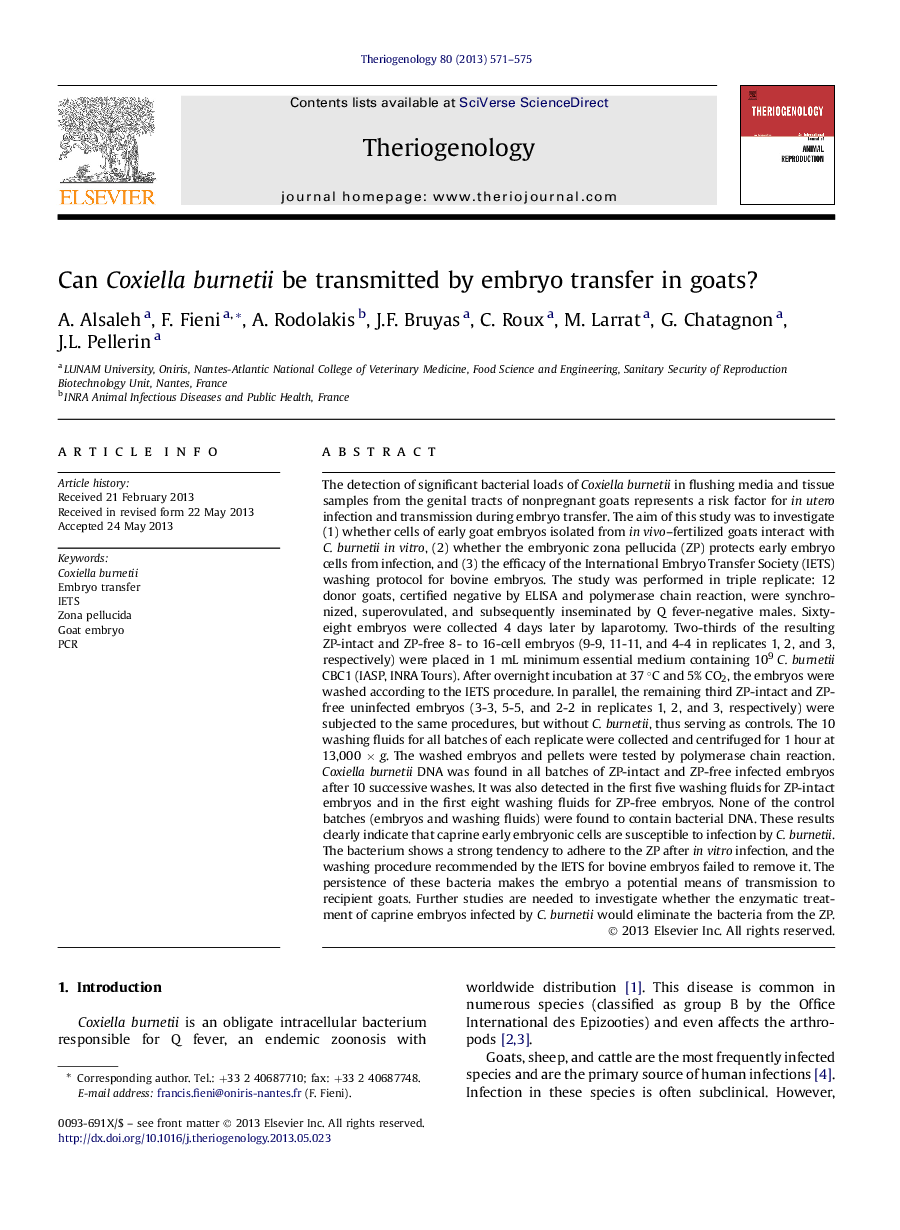| Article ID | Journal | Published Year | Pages | File Type |
|---|---|---|---|---|
| 10892291 | Theriogenology | 2013 | 5 Pages |
Abstract
The detection of significant bacterial loads of Coxiella burnetii in flushing media and tissue samples from the genital tracts of nonpregnant goats represents a risk factor for in utero infection and transmission during embryo transfer. The aim of this study was to investigate (1) whether cells of early goat embryos isolated from in vivo-fertilized goats interact with C. burnetii in vitro, (2) whether the embryonic zona pellucida (ZP) protects early embryo cells from infection, and (3) the efficacy of the International Embryo Transfer Society (IETS) washing protocol for bovine embryos. The study was performed in triple replicate: 12 donor goats, certified negative by ELISA and polymerase chain reaction, were synchronized, superovulated, and subsequently inseminated by Q fever-negative males. Sixty-eight embryos were collected 4 days later by laparotomy. Two-thirds of the resulting ZP-intact and ZP-free 8- to 16-cell embryos (9-9, 11-11, and 4-4 in replicates 1, 2, and 3, respectively) were placed in 1 mL minimum essential medium containing 109C. burnetii CBC1 (IASP, INRA Tours). After overnight incubation at 37 °C and 5% CO2, the embryos were washed according to the IETS procedure. In parallel, the remaining third ZP-intact and ZP-free uninfected embryos (3-3, 5-5, and 2-2 in replicates 1, 2, and 3, respectively) were subjected to the same procedures, but without C. burnetii, thus serving as controls. The 10 washing fluids for all batches of each replicate were collected and centrifuged for 1 hour at 13,000 à g. The washed embryos and pellets were tested by polymerase chain reaction. Coxiella burnetii DNA was found in all batches of ZP-intact and ZP-free infected embryos after 10 successive washes. It was also detected in the first five washing fluids for ZP-intact embryos and in the first eight washing fluids for ZP-free embryos. None of the control batches (embryos and washing fluids) were found to contain bacterial DNA. These results clearly indicate that caprine early embryonic cells are susceptible to infection by C. burnetii. The bacterium shows a strong tendency to adhere to the ZP after in vitro infection, and the washing procedure recommended by the IETS for bovine embryos failed to remove it. The persistence of these bacteria makes the embryo a potential means of transmission to recipient goats. Further studies are needed to investigate whether the enzymatic treatment of caprine embryos infected by C. burnetii would eliminate the bacteria from the ZP.
Related Topics
Life Sciences
Agricultural and Biological Sciences
Animal Science and Zoology
Authors
A. Alsaleh, F. Fieni, A. Rodolakis, J.F. Bruyas, C. Roux, M. Larrat, G. Chatagnon, J.L. Pellerin,
